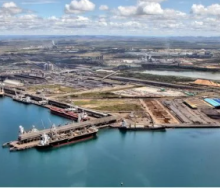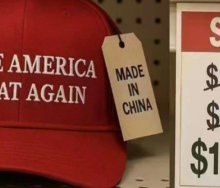Shippers who are already dealing with the impact of ongoing conflict in the Red Sea and the threat of further strike action at ports on the US East Coast and Gulf Coast will have another factor to consider next year – Trump 2.0.
Donald Trump’s announcement on Monday of an additional 10% tariff on all China imports and 25% from Canada and Mexico is a warning to shippers of the unpredictability and chaos awaiting in 2025, says Xeneta’s Emily Stausbøll.
And the fact that only China, Mexico and Canada are within the scope of Trump’s first round of tariffs means shippers who front-loaded imports from any other nation following his election victory earlier this month may have wasted time and money.
They may have needlessly moved containers on the elevated spot market if they exceeded minimum quantity commitments, while bloated inventories increase warehouse costs and take up working capital.
During the election campaign, Trump vowed 60% tariffs on all imports from China and up to 20% from the rest of the world. The fact he has now narrowed the tariffs to three exporting nations and fallen short of the 60% blanket proposal for China is an example of the unpredictable nature of his trade policy, Stausbøll points out.
Trump will make further announcements on tariffs, and they could impact any category of goods or region in the world, so shippers must be ready to act decisively if they want to frontload imports while avoiding unnecessary freight spend.
Transit time data is key to this approach, she points out.
Data in the Xeneta platform shows the average announced transit time across all carriers on the trade from Shanghai to New York in September was 35 days, with an actual average transit time of 38 days in Q3.
Within this average, the spread of actual transit times by carrier ranged from less than 30 days to over 50 days.
If a shipper is against the clock to import goods before tariffs come into effect, understanding actual transit times to choose the right carrier for their trade lanes is vital – otherwise they risk incurring the substantial cost of frontloading but see their goods arrive in the US too late to benefit from it, Xeneta explains.
Average spot rates on major fronthaul trades are an important barometer for the market – and numerous ocean freight rate indexes offer this – but, in isolation, they do not provide the depth and breadth of data required to effectively manage freight spend and supply chain risk in this scenario.
A shipper may look at average spot rates on their trade and be willing to pay a higher rate to ship goods if a carrier’s announced transit time ensures the container arrives in the US before tariffs come into effect.
But this may be a mistake, says Xeneta.
The average spot rate on the Shanghai to New York trade currently stands at $5 160 per FEU (40ft container).
One carrier on this trade offers spot rates above the market average at $6 420 per FEU and an announced transit time of 32 days.
Another offers average spot rates below the market average at $5 040 per FEU, but with a slightly longer announced transit time of 34 days.
However, data in the Xeneta platform shows the carrier with the higher spot rate achieved an actual average transit time of 40 days in Q3 compared to 39 days for the carrier with the lower rate.
“If a shipper went with the more expensive carrier, based purely on transit time, it would not have been money well spent.
“This makes clear that you can still protect supply chains through frontloading while also taking steps to manage freight spend,” said Stausbøll.













